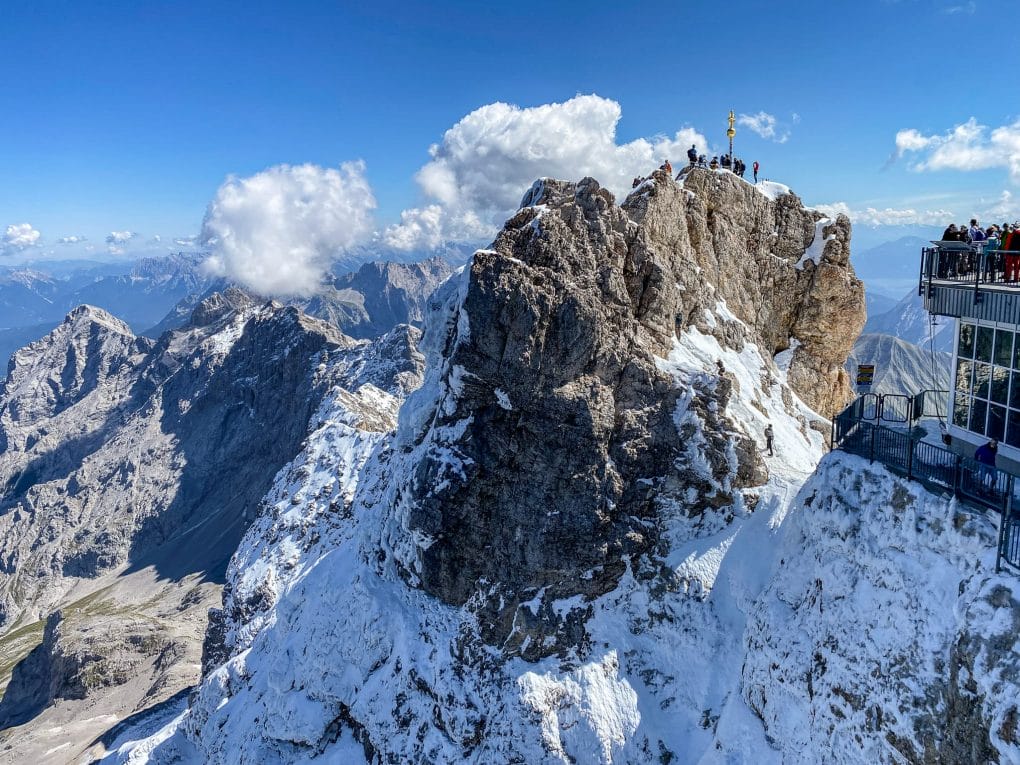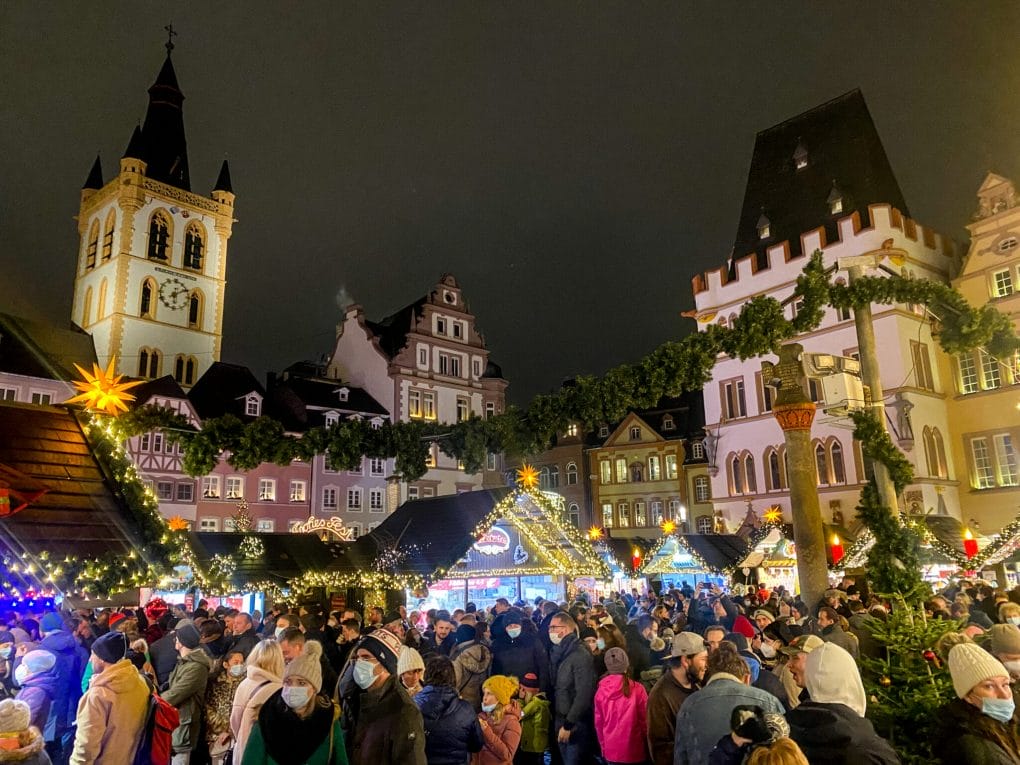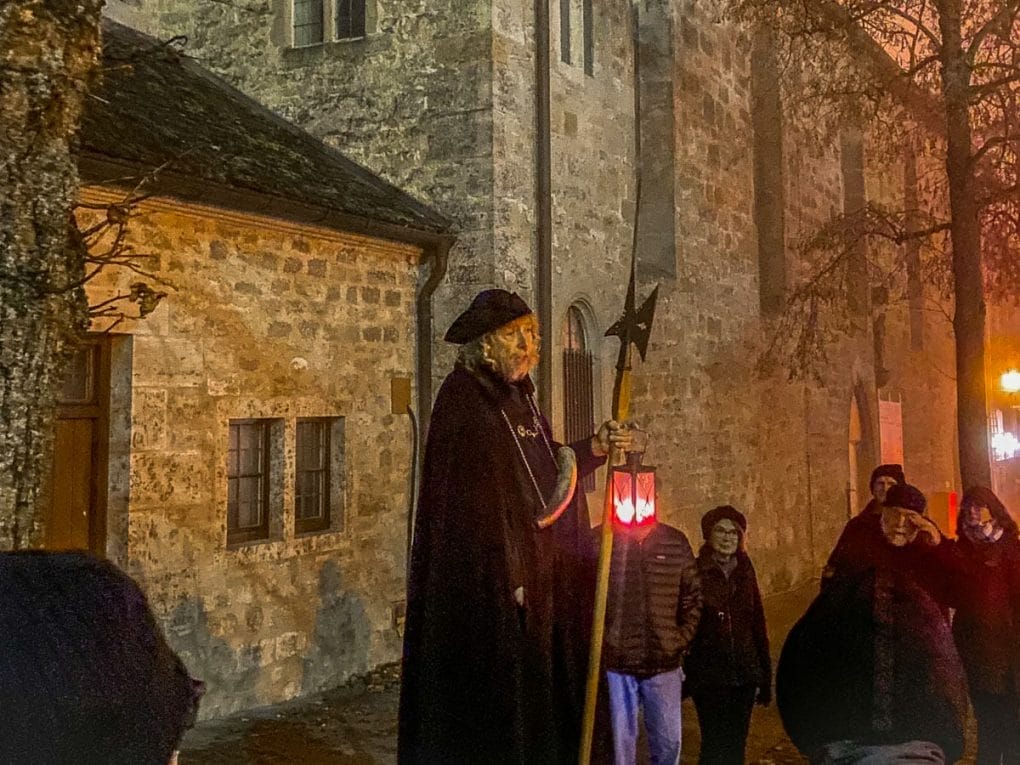Are you headed to the land of Wurst and Bier and curious about what should be on your Germany bucket list? I have some pretty cool ideas for you!
Germany is home to so many exciting things to do that range from epic festivals, impressive mountain peaks, exciting big cities, picturesque small towns—the list goes on and on. While living and studying in Germany for the past few years, I made it my mission to see and explore as much of the country as possible.
And although there were still countless things left that I wanted to see and do, I’ve become well-acquainted with the best experiences in Germany, so much so that I’ve put together this handy dandy Germany bucket list!
Without further ado, here are some of the most incredible things to do in Germany that you can’t do anywhere else!
Read more: An Ultimate Germany Packing List & What Not to Pack
This post may contain affiliate links, meaning at no additional cost to you, if you click my links and make a purchase, I may earn a small commission. Learn more on my disclosure page. Thank you for your support!

Ultimate Germany Bucket List: 25 Unique Things to Do in Germany
Here’s what should be on any avid traveler’s bucket list for Germany!
1. Experience the Best Places in Germany
No Germany bucket list is complete without seeing the country’s most beautiful and exciting destinations!
Many of these destinations need little introduction, but here’s a quick snapshot of the best places to visit in Germany and some guides that dive deeper into this impressive country.
- Germany’s best cities are Berlin, Munich, Bremen, Hamburg, Dresden, etc.
- The Bavarian Alps
- The Rhine and Mosel River Valleys
- Germany’s fairytale small towns like Rothenburg, Bernkastel, Cochem, etc.
- Famous German castles like Burg Eltz, Neuschwanstein, etc.

2. Wear Lederhosen to Oktoberfest, the World’s Largest Beer Festival
Or attend one of Germany’s many other Volksfests, traditional fall festivals held around the country that are much like Oktoberfest (beer, dancing, and traditional dress).
Wearing Trachten, or traditional German garb, is the best way to attend Oktoberfest. But avoid Amazon’s cheap, costumey outfits; Germans will judge you!
Lederhosen is the male outfit consisting of leather shorts or calf-length pants with suspenders, a plaid or Bavarian-style button up, high socks, and boots.
Dirndl is the outfit women traditionally wear: a patterned dress with a matching apron, a frilly white under-top, and flats or tennis shoes.

3. Hike the Epic Trails of the Bavarian Alps
Most of Germany isn’t mountainous, so taking the time to go hiking in the Bavarian Alps is one of the best things to do in Germany.
Nestled along the southern borders of Austria and Switzerland, there are various peaks and ridges that are popular to hike. Some of Germany’s best hiking trails in Bavaria lead to the Alpspitze, Partnach Gorge, Eibsee, and the Zugspitze.
But make sure your fitness is good enough for the hike you choose, as some climbs are no joke! Another way to enjoy some of the longer and more challenging trails is to take a cable car up and hike down when available.
4. Don Your Birthday Suit and Visit a German Bath House
German bath houses are beyond relaxing and are a tradition inspired by Scandinavians. Nudity isn’t as big of a concern in Germany as it is in America, and when you go to a bathhouse or spa, you do so in nothing but what your mama gave you!
German spas typically feature large swimming pools, plunge pools of various temperatures, saunas, salt scrubs, and more. Some feature swim-up pool bars and restaurants, too!
But fair warning, German bathhouses aren’t usually segregated by gender. However, I found it to be a truly empowering experience as the baths are visited by people of all ages, shapes, and sizes, and the vast majority of people are respectful and pay you little mind.
Baden-Baden is Germany’s famous spa town home to several impressive bath houses and resorts. Other great German spas to add to your bucket list include Therme Erding near Munich and Therme Euskirchen outside Bonn.
5. Party the Night Away at Karneval (Fasching) in Cologne
Karneval is a colorful festival held in Germany before lent, predominantly in the southern and western regions that practice Roman Catholicism. It’s the German equivalent of Mardi Gras, and one of the largest celebrations happens every year in Cologne.
The festival is multiple days long and features events like an impressive parade, live music, and lots of partying. To celebrate Karneval correctly, festival-goers dress up in fun and silly costumes, not all too dissimilar to American Halloween!
Other great places to celebrate Fasching in Germany are the “Big 4” besides Cologne, including Mainz, Koblenz, and Düsseldorf. Many small communities hold their celebrations, too!

6. Drink Riesling Wine Along the Rhine and Mosel River Valleys
Riesling is a fabulous wine that originated in the Rhine region in Germany as far back as the 15th century. Riesling wines are made with white grapes ranging from dry to sweet and often have citrus, peach, and floral notes.
The best places to sip Riesling are the Rhine and Mosel River Valleys, where historic cellars and stunning vineyards blanket the rolling hills that line the water.
My favorite wine towns in Germany are Bernkastel-Kues and Trier!

7. Experience the Magic of German Christmas Markets
Christmas market season is by far one of my favorite times of year in Germany. The Christmas lights, yummy treats, and cozy gluhwein (mulled wine) make the winter cold bearable and fun!
Many markets open mid to late November and end before Christmas or after the New Year. Germany’s major cities have markets, but some of the best are in small towns or rural nooks.
Some of Germany’s most memorable Christmas markets are Cologne, Trier, Bernkastel Kues, and the Ravenna Gorge.
If you’re more into spooky things, you may be enticed by the German tradition of the Krampus. This scary Christmas monster punishes naughty children and gets his own parade held in Munich and other Alpine towns.

8. Smell the Spring Flowers that Bloom in Germany
Although Germany isn’t necessarily world-famous for flowers, there are quite a few places to enjoy the changing seasons!
The most famous place to see flowers in Germany is along Bonn’s Cherry Blossom Avenue. The flowers often peak in April and are easy to see as they’re right in the heart of the city!
Another fabulous place to see spring flowers is Rhineland Palatinate’s Almond blossoms, which turn the German Wine Route pink, and vendors set up stalls offering wines and goodies in celebration.
Germany even has a few colorful tulip fields, some of which you can pick to bring the beauty home with you! Be sure to respect farmer’s fields and don’t walk through, trample, or pluck the flowers on private fields.
Read more: When is the Worst Time to Visit Germany?
9. Take in All the Autumn Vibes at a Pumpkin Festival
One of Germany’s best-known pumpkin festivals is the Ludwigsburg Pumpkin Festival. The best things to do at the event are snap photos of the giant pumpkin displays and carvings, eating pumpkin-inspired foods, and drinking pumpkin wine!
Ludwigsburg is near Stuttgart and typically hosts this annual festival between the end of August and early November.

10. Road Trip Germany’s Romantic Road and See Charming Medieval Towns
The Romantic Road is a famous tourist route in Germany, known for its charming towns and historical sites. The route stretches nearly 220 miles, winding through the southern part of Germany, through rolling vineyards, farmland, and the foothills of the Alps.
Some of the most notable cities and towns along the route are Rothenburg ob der Tauber, Würzburg, and Füssen.
My dream was to rent a camper van to take along the romantic route, stopping at the main spots. Unfortunately, I didn’t budget my time in Germany accordingly, but maybe you’d be enticed by the idea of a Romantic Road road trip!

11. Go on a DIY Castle Hopping Tour Throughout Germany
Germany has an estimated 20,000 to 25,000 castles, many of which have been reduced to ruins over the centuries! But there are still plenty of beautiful ones to see while in Germany that’ll transport you to another time.
Some of the best castles in Germany are Burg Eltz (a medieval wonder), Neuschwanstein (Disney’s Cinderella castle), and Hohenzollern Castle (Neo-Gothic glamor)!
The Rhine River is also famous for its many castles that line the waterway and offer an exciting castle hopping opportunity.

12. Witness Important WWII Historical Sites
History buffs and those interested in World War II should consider visiting Germany’s historical landmarks.
Many are conveniently located in Berlin, whereas others are more spread out.
Some of the most notable sites are:
- Hitler’s Eagle Nest in Berchtesgaden
- Stumbling Stones in various cities
- Dachau Concentration Camp Memorial Site near Munich
- Berlin’s Memorial to the Murdered Jews of Europe
- Jewish Museum in Berlin

13. See One of Many of the World’s Largest Cuckoo Clocks
Bavaria is the birthplace of the cuckoo clock, so it only makes sense that one uniquely German thing to do is see one of the world’s largest cuckoo clocks, of which there are many!
A cuckoo clock is traditionally made of wood and features intricate designs. These clocks have hanging weights that mechanically power the hands and the little cuckoo bird that chimes on the hour. They also can have moving pieces and figurines that add a fun touch when the clock chimes.
Some of Germany’s largest cuckoo clocks can be found in

14. Watch the Cows Come Home at an Alpine Cow Parade
Germany’s Alps are undeniably beautiful and worthy of visiting in their own right, but you know what makes the mountains in Germany extra special? The COWS!
And every year, at the end of summer, farmers who’ve taken their cows to the mountains to graze the healthy herbal grasses bring them home in preparation for winter. In celebration of the good health of these graceful creatures, the cows are adorned with flowers, large decorative bells, and other laurels.
Local villages coordinate the bringing home of the cows, and those interested can time their visit to witness the cute procession known in German as Viehscheide.

15. Learn More About Medieval Times with a Night Watchman Tour
Germany’s Middle Ages left an indelible mark on the nation, and there are many beautiful small towns that show off this time in history.
Back then, nightwatchmen patrolled the streets to ward off criminal behavior. Today, visitors can take a tour with a guide dressed like one of these nightwatchmen in some of Germany’s historic destinations.
The guides dress up in the olden day garb and don a large Hellebarde (long-poled axe), which was the weapon of choice then. These tours typically begin at nightfall, last about an hour, and are filled with informative facts about that town’s medieval history.
Places with nightwatchmen tours in Germany are:
16. Try to Get In (And Get Denied) at Berlin’s Infamous Berghain Nightclub
Berghain is a notorious night club in Berlin famous for being nearly impossible to get into! This club oozes classic German grunge and stays open well into the morning.
Those who attempt to get in and are denied at the door don’t need to leave the club empty-handed because you can buy a t-shirt declaring your fun-hearted failure.
And if you do get in, prepare to dance your pants off!
Read more: Best Apps for Germany Travel and Life Abroad
17. Walk Through the World’s Narrowest Street in Reutlingen
In Germany, you’ll find the world’s narrowest street nestled in the unsuspecting town of Reutlingen. The street is Spreuerhofstrasse, and it’s 12.2 inches wide at its narrowest. It’s even certified by Guinness World Records!

18. Make a Dent in the More than 5,000 Beer Brands in Germany
Beer is a way of life in Germany, so those who love a cold one should try to savor all the different options! Although craft brews are rare thanks to Germany’s beer purity law, which states German beers must be made the traditional way only with water, hops, and barley, there are still quite a few different varieties to sample.
Some popular breweries to try include Bitburger, Paulaner, Lowenbrau, München, etc. As for common beer types in Germany, be sure to check out Hefeweizen (wheat beer), Kölsch (beer from Cologne), Rauchbier (smoked beer), Altbier (dark ale from Dusseldorf), Dunkel (dark lagers) and Helles (light lager).
You can even find beer mixed with cola (Colaweizen), banana juice (Bananaweizen), and lemon soda (Radler)! Beer is also one of the best souvenirs from Germany to bring home with you!

19. Eat Uniquely German Foods
Eating local foods is one of my favorite activities to do in a new place, and in Germany there are many unique dishes to try!
While this only scratches the surface, some must try German goodies are:
- Currywurst: sausage smothered in a sweet tomato sauce and dusted with curry powder
- Käsepatzle: Homemade cheesy noodles with fried onions
- Rotkraut: cooked pickled red cabbage
- Apple strudel: An apple pie like dessert served with whipped cream, vanilla sauce, and/or ice cream
- Schnitzel: A flattened and breaded pork steak that’s deep fried and often served with potatoes and topped with a variety of sauces
- Pork knuckle: A large hunk of meat that’s juicy and roasted so the skin is extra crispy
20. Walk Across One or All of Germany’s Tree Top Walks
Did you know there are four treetop walks in Germany? Known as “Baumwipfelpfade,” these walks reach epic heights and overlook some of the country’s most scenic landscapes! They’re made up of accessible boardwalks and fantastic day trip destinations for hikers and families.
You can find them here:
- Bavarian Forest, Neuschönau
- Black Forest, Bad Wildbad
- Naturerbe Zentrum Rügen, Binz
- Saarschleife, Mettlach (pictured above)
21. Get an Adrenaline Rush at Europa Park
Europa Park is one of Europe’s largest theme parks, second only to Disneyland® Paris! The park has thrilling roller coasters, enchanting themed areas, and live events. You’ll find it tucked along the French and German border in the town of Rust, about two hours from Stuttgart, and it’s a must-visit for coaster heads and fans of amusement parks.

22. Make the Effort to See Far Flung Places
There are quite a few places in Germany that are beautiful but insanely inconvenient to reach. Mainly because they are tucked away in remote corners with limited public transportation options and far from common tourist stops.
But if you have time for a deep dive (and a car), here are a few places worthy of a spot on an ultimate Germany bucket list, even if they’re slightly “inconvenient.”
If you make the effort, here are some unique places to see in Germany:
- The Painter’s Way in the Elbe Sandstone Mountains
- The white sands of Amrumer Dünen
- The insta-famous Devils Bridge
- The mountains and views of Berchtesgaden National Park
- The beaches of Rügen Island
- The bright blue waters of Bodensee
- The lush forests of Harz National Park
Read more: My Honest Pros and Cons of Living in Germany
23. Feel the Wind in Your Hair on an Alpine Coaster Ride
One of my favorite unique things to do in Germany is ride an Alpine coaster! An Alpine coaster is a non-powered roller coaster built in the mountains, offering a rush of adrenaline while taking in stunning views!
Riders sit in their own toboggan-like car or with a partner for kids and can control their speed with hand brakes. These coasters typically provide a thrilling yet scenic ride, offering passengers a unique blend of adrenaline-pumping excitement and picturesque mountain views.
Germany’s Alpine coasters can be found here:
- Alpine coaster in Oberammergau
- Alpsee Bergwelt in Immenstadt
- Hasenhorn Coaster in Todtnau
- Mehliskopf Bobbahn in Mehliskopf

24. Make a Point to Visit Germany’s Many Notable Roman Ruins
Once upon a time the Romans occupied many parts of Germany! If you’re a history buff, you may want to consider crossing off Roman landmarks in Germany from your bucket list!
One of the best places to see Roman Ruins is Trier, Germany’s oldest city, boasting ancient Roman baths, an amphitheater, a remarkably intact Roman gate, and more! Another great place to see Roman ruins in Germany is Xanten Archaeological Park, just north of Dusseldorf.

25. Go to University for Essentially Free
Did you know that university is essentially free in Germany? Even for international students! So, while this little Germany bucket list item likely isn’t remotely an option for 90% of you, I couldn’t help but share!
It’s a great way to live in Germany while getting a higher education at one of the many tuition-free universities in Germany. How do I know? Because I got my Master’s degree in Trier!
Read more: How to Move to Germany From the USA
There you have it, some of the best things to do in Germany that are worthy of any Germany bucket list. Have any unique experiences to add? Share below!





